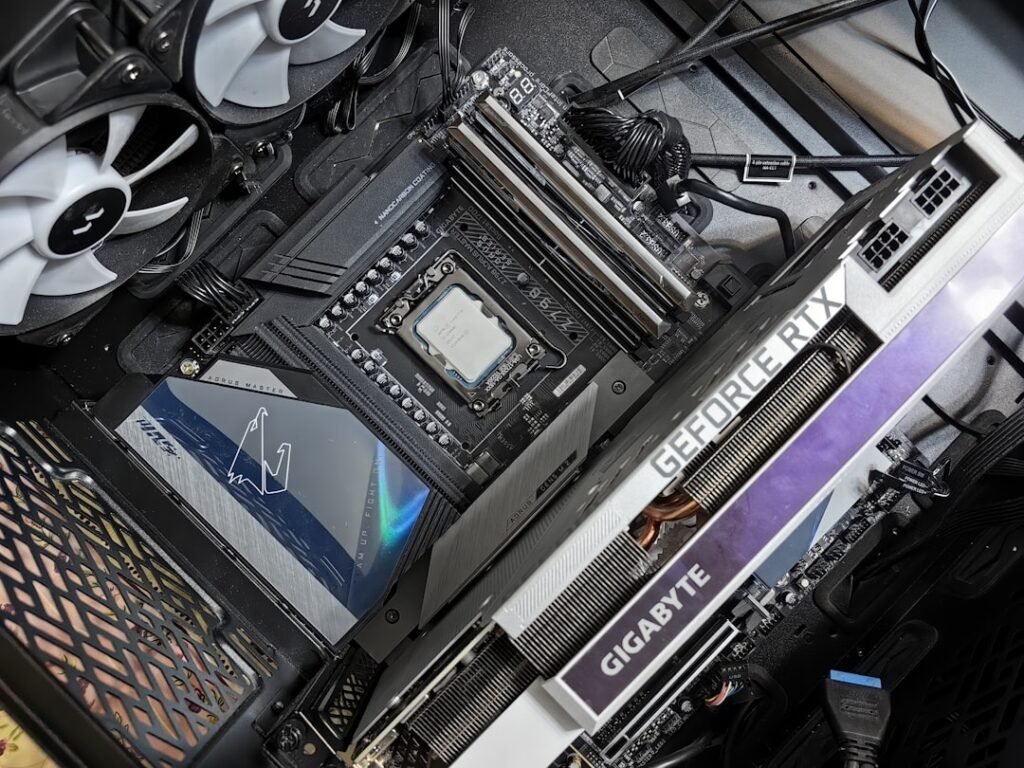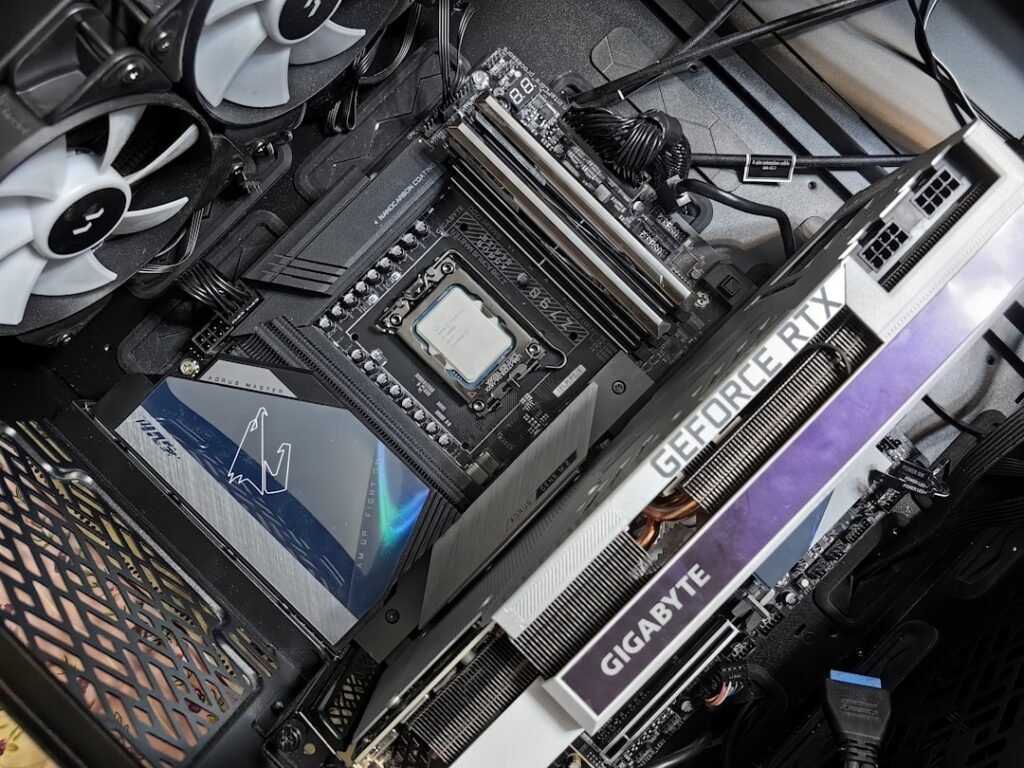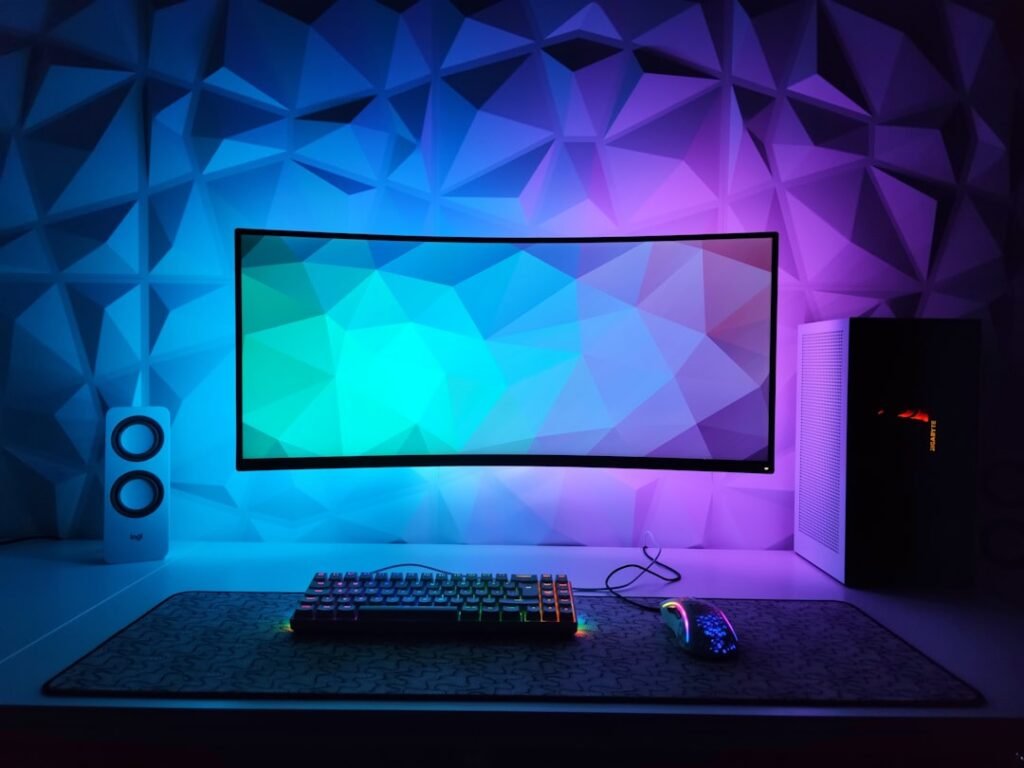In the ever-evolving landscape of gaming technology, the video card stands as a pivotal component that can make or break the gaming experience. As the heart of graphical performance, gaming video cards, or graphics processing units (GPUs), are responsible for rendering images, animations, and video in real-time. With the rise of high-definition displays and virtual reality environments, the demand for powerful GPUs has surged, leading to a competitive market filled with innovative options.
The significance of a robust gaming video card cannot be overstated. It not only influences frame rates and resolution but also determines the overall visual fidelity of games.
As developers push the boundaries of graphics with more intricate designs and realistic environments, having a capable GPU becomes essential for gamers who wish to immerse themselves fully in their virtual worlds. This article aims to guide you through the essential factors to consider when selecting a gaming video card, explore the top contenders for 2025, and provide insights into budget-friendly options and future-proofing strategies.
Key Takeaways
- Gaming video cards are essential components for a smooth and immersive gaming experience, providing high-quality graphics and performance.
- When choosing a gaming video card, key factors to consider include GPU performance, memory capacity, cooling solutions, and compatibility with your gaming setup.
- In 2025, top gaming video cards are compared based on their performance, including factors such as frame rates, resolution support, and ray tracing capabilities.
- Budget-friendly gaming video cards for 2025 offer a balance of performance and affordability, catering to gamers with varying budgets.
- Future-proofing your gaming setup in 2025 involves considering gaming video cards with advanced features such as AI-driven performance optimization and real-time ray tracing technology.
Key Factors to Consider when Choosing a Gaming Video Card
Performance and Resolution Capabilities
The first and foremost consideration is performance, which is often measured by metrics such as frame rates, resolution capabilities, and graphical settings. Gamers should assess their specific needs based on the types of games they play and the resolutions they wish to achieve. For instance, competitive gamers may prioritize high frame rates at lower resolutions, while those who enjoy visually stunning single-player experiences might seek cards that excel in rendering high-resolution textures and complex lighting effects.
Compatibility with Existing Hardware
Another critical aspect is compatibility with existing hardware.
The power requirements of modern GPUs can be substantial, necessitating a PSU that can deliver adequate wattage. Additionally, physical space within the case must be considered, as some high-performance cards can be quite large. Understanding these compatibility issues can save gamers from potential headaches during installation.
Cooling Solutions for Optimal Performance
Cooling solutions also play a vital role in maintaining optimal performance. High-end gaming video cards generate significant heat during operation, which can lead to thermal throttling if not managed properly. Gamers should look for cards equipped with efficient cooling systems, whether they are air-cooled or liquid-cooled solutions. Effective cooling not only prolongs the lifespan of the GPU but also ensures consistent performance during extended gaming sessions.
Top 2025 Gaming Video Cards: Performance Comparison

As we delve into the top gaming video cards of 2025, it becomes evident that manufacturers have made remarkable strides in performance and efficiency. Leading the pack is the NVIDIA GeForce RTX 5090, which boasts unparalleled ray tracing capabilities and AI-enhanced graphics. With its cutting-edge architecture and advanced features like DLSS 3.0, this card delivers stunning visuals while maintaining high frame rates even in demanding titles.
Gamers seeking the ultimate experience will find that the RTX 5090 excels in both 4K gaming and virtual reality applications. On the other side of the spectrum, AMD’s Radeon RX 7900 XT has emerged as a formidable contender. With its impressive performance in rasterization and competitive pricing, it appeals to gamers who desire high-quality graphics without breaking the bank.
The RX 7900 XT shines in titles that prioritize traditional rendering techniques, making it an excellent choice for those who enjoy a diverse range of games. Its robust cooling solution also ensures that it remains stable under heavy loads, further enhancing its appeal. When comparing these two giants, it is essential to consider not only raw performance but also factors such as power consumption and thermal efficiency.
The RTX 5090 may offer superior performance in ray tracing scenarios, but it also demands more power than its AMD counterpart. This difference can influence overall system performance and energy costs over time. Ultimately, the choice between these two leading GPUs will depend on individual preferences and gaming requirements.
Best Budget-Friendly Gaming Video Cards for 2025
| Video Card | Memory | Price | Performance |
|---|---|---|---|
| AMD Radeon RX 6600 | 8GB GDDR6 | 299 | High |
| NVIDIA GeForce GTX 1650 | 4GB GDDR5 | 159 | Medium |
| AMD Radeon RX 5500 XT | 4GB GDDR6 | 199 | Medium |
For gamers on a budget, finding a capable video card that delivers solid performance without straining finances can be a daunting task. Fortunately, 2025 has introduced several budget-friendly options that do not compromise on quality. One standout choice is the NVIDIA GeForce GTX 1660 Super, which continues to impress with its ability to handle 1080p gaming at high settings.
This card strikes an excellent balance between price and performance, making it an ideal option for casual gamers or those looking to upgrade from integrated graphics. Another noteworthy contender is AMD’s Radeon RX 6600. This GPU offers competitive performance in its price range and excels in delivering smooth gameplay across various titles.
With its efficient architecture and support for modern features like ray tracing, the RX 6600 provides an enticing option for gamers who want to experience new technologies without overspending. Its lower power consumption also means that it can be paired with less robust power supplies, further enhancing its appeal for budget-conscious builders. When considering budget-friendly options, it is crucial to evaluate not only initial costs but also long-term value.
Gamers should look for cards that offer good upgrade paths and support for future titles. While these budget GPUs may not match the performance of their high-end counterparts, they can still provide an enjoyable gaming experience without requiring significant financial investment.
Future-Proofing Your Gaming Setup: 2025 Gaming Video Cards with Advanced Features
As technology continues to advance at a rapid pace, future-proofing your gaming setup has become increasingly important. In 2025, several gaming video cards come equipped with advanced features designed to ensure longevity in an ever-changing landscape. One such feature is support for real-time ray tracing, which enhances lighting and shadow effects for a more immersive experience.
Cards like the NVIDIA GeForce RTX 5080 not only excel in traditional rendering but also embrace this cutting-edge technology, making them ideal for gamers who want to stay ahead of the curve. Additionally, many modern GPUs now support variable refresh rate (VRR) technologies such as NVIDIA G-SYNC and AMD FreeSync. These technologies synchronize the display’s refresh rate with the GPU’s output, resulting in smoother gameplay and reduced screen tearing.
Investing in a video card that supports VRR can significantly enhance your gaming experience, particularly in fast-paced titles where every frame counts. Moreover, features like AI-driven upscaling technologies are becoming increasingly prevalent in new GPUs. These innovations allow lower-resolution images to be upscaled intelligently without sacrificing quality, enabling gamers to enjoy high-performance gameplay even on less powerful hardware.
As game developers continue to push graphical boundaries, having a GPU equipped with these advanced features will ensure that your setup remains relevant for years to come.
Overclocking and Cooling Solutions for 2025 Gaming Video Cards

Overclocking has long been a popular practice among enthusiasts seeking to extract maximum performance from their gaming video cards. In 2025, many GPUs come with built-in overclocking capabilities that allow users to push their hardware beyond factory settings safely. However, overclocking generates additional heat, making effective cooling solutions paramount for maintaining stability and performance.
When considering overclocking your GPU, it is essential to invest in a robust cooling system. Many manufacturers offer models with advanced cooling solutions featuring multiple fans or even liquid cooling options. These systems are designed to dissipate heat efficiently while keeping noise levels low during operation.
Gamers who plan to overclock should prioritize models known for their thermal performance and reliability under load. In addition to hardware solutions, software tools play a crucial role in managing overclocking settings and monitoring temperatures. Many GPUs come bundled with proprietary software that allows users to adjust clock speeds and fan curves easily.
By keeping an eye on temperature readings during gameplay or benchmarking sessions, users can ensure that their overclocked settings remain stable without risking damage to their hardware.
Tips for Upgrading Your Gaming Video Card in 2025
Upgrading your gaming video card can breathe new life into your gaming setup, but it requires careful planning and consideration. First and foremost, assess your current system’s compatibility with potential upgrades. Check your motherboard’s PCIe slots and ensure that your power supply can handle the increased wattage demands of newer GPUs.
Additionally, consider whether your case has enough space to accommodate larger graphics cards. Once you’ve confirmed compatibility, it’s wise to research various models based on your gaming preferences and budget constraints. Reading reviews and benchmarks can provide valuable insights into how different cards perform across various titles and resolutions.
Pay attention to factors such as thermal performance and noise levels—these aspects can significantly impact your overall gaming experience. Finally, consider timing your upgrade strategically. The GPU market can be volatile, with prices fluctuating based on demand and availability.
Keeping an eye on sales events or new product launches can help you secure a better deal on your desired card. By being patient and informed about market trends, you can maximize your investment while ensuring that you select a video card that meets your needs for years to come.
The Ultimate Gaming Video Card for 2025
As we navigate through 2025’s dynamic gaming landscape, selecting the ultimate gaming video card requires careful consideration of various factors—from performance metrics to budget constraints and future-proofing capabilities. With leading contenders like the NVIDIA GeForce RTX 5090 and AMD Radeon RX 7900 XT setting new standards for graphical excellence, gamers have access to powerful tools that enhance their virtual experiences. For those on tighter budgets, options like the GTX 1660 Super and RX 6600 provide excellent value without sacrificing quality.
As technology continues to advance rapidly, investing in GPUs equipped with advanced features such as ray tracing support and VRR technologies will ensure that your setup remains relevant amidst evolving gaming demands. Ultimately, whether you’re an avid enthusiast seeking top-tier performance or a casual gamer looking for budget-friendly solutions, understanding your needs and staying informed about market trends will empower you to make an informed decision when upgrading your gaming video card in 2025. The right choice will not only enhance your current gaming experience but also lay the groundwork for future adventures in the ever-expanding world of interactive entertainment.
FAQs
What are the best gaming video cards for 2025?
In 2025, some of the best gaming video cards include the NVIDIA GeForce RTX 40 series, AMD Radeon RX 8000 series, and Intel Arc Alchemist series. These cards offer high performance, advanced features, and support for the latest gaming technologies.
What features should I look for in a gaming video card?
When choosing a gaming video card, it’s important to consider factors such as performance, memory capacity, cooling system, ray tracing support, and compatibility with the latest gaming technologies. Look for cards that offer high frame rates, ample VRAM, efficient cooling, and support for features like ray tracing and DLSS.
What is ray tracing and why is it important for gaming video cards?
Ray tracing is a rendering technique that simulates the way light interacts with objects in a virtual environment, creating more realistic and immersive visuals in games. Gaming video cards that support ray tracing can deliver stunning graphics with lifelike lighting, reflections, and shadows, enhancing the overall gaming experience.
How do I know if a gaming video card is compatible with my system?
Before purchasing a gaming video card, it’s important to check the compatibility with your system’s motherboard, power supply, and available space in the PC case. Additionally, ensure that your system meets the minimum requirements for the card in terms of power supply wattage and connectivity options.
What are some upcoming advancements in gaming video card technology?
In the near future, advancements in gaming video card technology may include improved ray tracing capabilities, higher memory bandwidth, enhanced AI-driven features, and increased efficiency through advanced manufacturing processes. Additionally, there may be developments in connectivity options and support for emerging display technologies.




